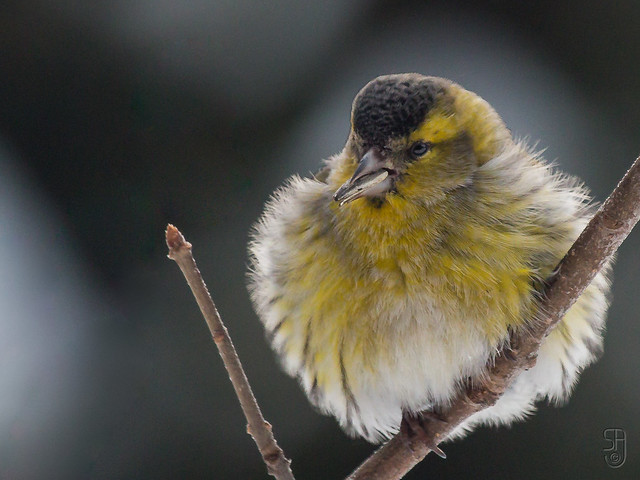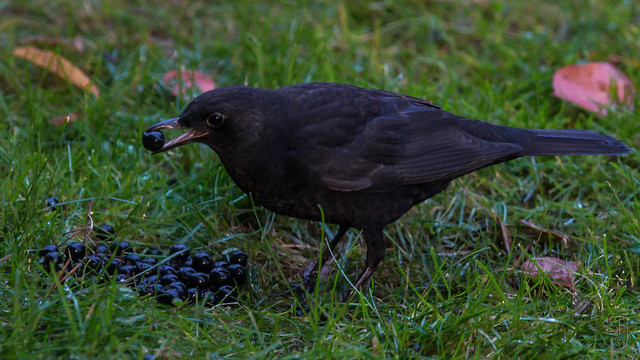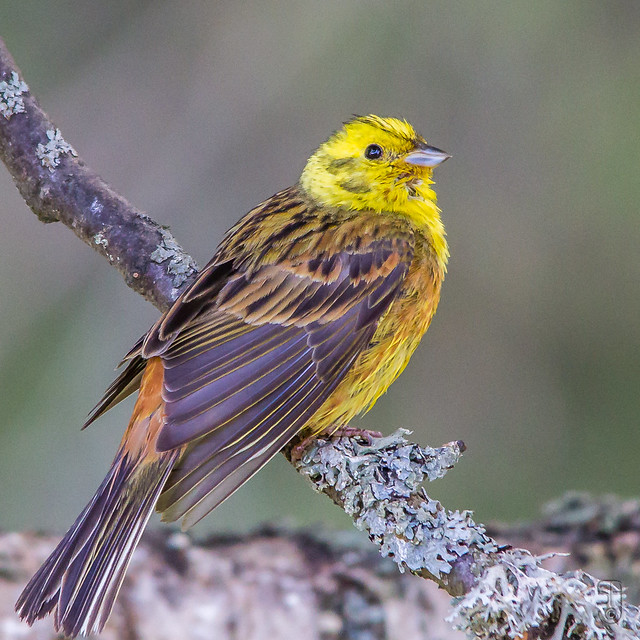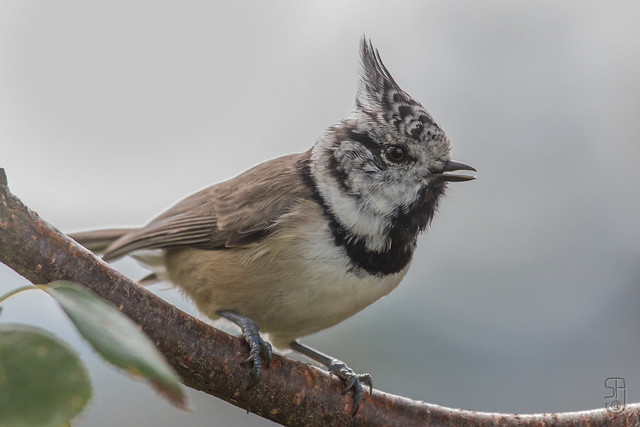
This is a chronologic list with photos of all 40 bird species having visited our garden on Kongsgårdmoen (Kongsberg, Norway) since we moved in, August 2011.Every single photo below has been taken in my garden.
If you click on any of the photos below, you'll open it in Flickr. Once on Flickr (on a computer), Click L for a larger view and Z to zoom in really close.
2011
Wood Nuthatch (Sitta europaea) - Spettmeis
Canon 550D, Canon EF 70-300mm f/4-5.6 - 1/2000, f/5.6, ISO800, 300mm - Sept. 8, 2011
The upside-down bird was one of the first species to start visiting the feeding station I started September 2011, outside our house on Kongsgårdmoen (Kongsberg, Norway). It is also one of the most faithful of all visitors here. The photo is part of a large Flickr Wood Nuthatch album. Click the link for more.
Blue Tit (Cyanistes caeruleus) - Blåmeis

Canon 550D, Canon EF 70-300mm f/4-5.6 - 1/1000, f/5.6, ISO800, 220mm - Sept. 8, 2011
The Blue Tit is another very faithful visitor. They've also been using my nest boxes every year.
I have a lot of Blue Tit photos on Flickr. Click the link for more. Click on thumbnails to enlarge.
Great Tit (Parus major) - Kjøttmeis

Canon 550D, Canon EF 70-300mm f/4-5.6 - 1/250, f/7.1, ISO1600, 300mm - Sept. 28, 2011
As faithful as the Blue Tit and always nesting near the house every summer, often in a nest box. Their numbers have increased over the years. I also have lots of Great Tit photos on Flickr.
Common Magpie (Pica pica) - Skjære

Canon 60D, Sigma 150-500mm - 1/320, f/8, ISO1600, 439mm - Aug. 7, 2012
I may not see them in the garden every day, but I will at least see or hear them in the neighbourhood. If I feed with breadcrumbs or nuts on the ground, they will turn up in no time. Except for a few of juvenile birds, like the one above, they are quite shy. Unlike other birds they will react to any movement inside the house even through closed windows reflecting the outside.
Surprise! I also have lots of Magpie photos on Flickr.
Eurasian Jay (Garrulus glandarius) - Nøtteskrike

Canon 550D, Canon EF 70-300mm f/4-5.6 - 1/320, f/8, ISO1600, 275mm - Sept. 28, 2011
Not a very regular visitor, but I've seen them here every year. The photo is part of a large Flickr Eurasian Jay album. For something really weird, check out my Eurasian Jay in heavy molt album!
Hawfinch (Coccothraustes coccothraustes) - Kjernebiter

Canon 60D, Sigma 150-500mm - 1/400, f/8, ISO1600, 370mm - July 2, 2012
It was a moment to treasure when this adult male Hawfinch turned up in my garden with two fledglings and started feeding them with small pieces of nuts! The hawfinch returns every year but is not a very frequent visitor. Here is a link to my Hawfinch photos on Flickr.
White Wagtail (Motacilla alba) - Linerle

Canon 70D, Canon EF 100-400 f4.5-5.6 L USM IS - 1/400, f/8, ISO1600, 370mm - June 15, 2014
This is regular summer visitor. They are always nesting somewhere near the garden. The photo above shows a fledgling begging her father for food. Here is the link to my White Wagtail Flickr photos.

Canon 60D, Sigma 150-500mm - 1/320, f/8, ISO1600, 500mm - June 28, 2012
No other birds have visited in higher numbers. The birds in the photo all seems to be juvenile.
No surprise then that I have a lot of European Greenfinch photos on Flickr. I've also made a blog post on the European Greenfinch.
Great Spotted Woodpecker (Dendrocopos major major) - Flaggspett

Canon 550D, Canon EF 70-300mm f/4-5.6 - 1/800, f/5, ISO1600, 160mm - Sept. 24, 2011
Another daily visitor. It has been a privilege to follow the fledglings grow into juveniles and adult birds and see the plumage change almost from day to day!
Here are all my Great Spotted Woodpecker photos on Flickr.
Brambling (Fringilla montifringilla) - Bjørkefink

Canon 60D, Sigma 17-70mm f/2.8-4 DC Macro OS - no data - Oct.12, 2012
The Brambling is a migratory bird and nests in the Norwegian mountains, but every spring and autumn they stop by here for a few weeks to build up their energy reserves on my neverending supply of Sunflower seeds. This female flew into my window and landed on the glass table on the terrace. She was dizzy enough to allow me to very close with my 17-70 Sigma lens. Since no one had kept the table clean this late in the year I had to do the job myself in Photoshop. I didn't change the bird, only the table and the bird shadow. I have a lot of Brambling photos of on Flickr.
Willow Tit (Poecile montanus) - Granmeis

Canon 550D, Canon EF 70-300mm f/4-5.6 - 1/2000, f/5.6, ISO800, 210mm - Sept. 29, 2011
A not so frequent visitor, but I've seen it here in periods every year. It is a trustful little creature who always lets me know that I'm disturbing if I fill up the feeders while it is around with its hoarse voice. The photo is part of my large Willow Tit album on Flickr.
Chaffinch (Fringilla coelebs) - Bokfink

Canon 60D, Sigma 150-500mm - 1/500, f/8, ISO1600, 500mm - June 25, 2012
Together with the Greenfinches, the Chaffinches have been the most faithful of the migratory birds coming to the garden. This little one tried to peel the sunflower seeds alone, but soon gave up and ended begging her father for food. Here is a link to my Chaffinch photos on Flickr.
I've also written a blog post on the species.
Coal Tit (Periparus ater) - Svartmeis

Canon 60D, Sigma 150-500mm - 1/250, f/8, ISO1600, 500mm - August 31, 2012
Not the most frequent of visitors, but it turns up for a couple of weeks every now and then.
My feeding station is backlit most of the day, so sometimes I have tested out having a large reflector on one of the garden chairs to fill out the shadows a bit, as on the photo above. You can see it in the bird's eye if you click the photo above, and then click again when you see it on Flickr, to really zoom in. The photo is part of my Flickr Coal Tit album.
Eurasian Tree-Creeper (Certhia familiaris familiaris) - Trekryper

Canon 60D, Sigma 150-500mm - 1/50, f/8, ISO1600, 439mm - November 29, 2013
This has been maybe the most difficult bird to photograph in my garden, for at least 3 reasons:
It has always been coming at dusk.
The camouflage is extremely good.
It has only been here a handful of times. Correction: I've only seen it a handful of time.
On the positive side: It isn't very shy. The photo is part of my Flickr Eurasian Tree-Creeper album.
Eurasian Bullfinch (Pyrrhula pyrrhula) - Dompap

Canon 70D, Canon EF 100-400 f4.5-5.6 L USM IS - 1/400, f/5.6, ISO2500, 400mm - January 4, 2016
The Bullfinch is the Christmas Card bird #1 in Norway. It has been an occasional visitor every year, very often a male and a female coming together.
Here is a link to my Bullfinch photos on Flickr showing all my Bullfinch photos there.
2012
Eurasian Siskin (Carduelis spinus) - Grønnsisik

Canon 70D, Canon EF 100-400 f4.5-5.6 L USM IS - 1/320, f/6.3, ISO1250, 400mm - January 14, 2016
This little feather ball is normally a migrant bird spending the winter far from Norway and looks half the size of what it did on this cold day. In 2016, with a mild winter, a small group often came for food in January. It is a regular summer visitor. Here are my Eurasian Siskin photos on Flickr.
Redpoll (Carduelis flammea) - Gråsisik

Canon 70D, Canon EF 100-400 f4.5-5.6 L USM IS - 1/320, f/6.3, ISO2500, 400mm - January 21, 2016
January 2016 was an exceptionally good month for taking bird photos in the garden, probably because of the mild winter with little snow. The photo above shows, what ornithologists have told me, is a subspecies, a male Lesser Redpoll. I find it hard to see the difference of these subspecies, so I choose to count them all as Redpolls. The Redpolls have only been here for 3 short periods as I can remember. The photo is part of my Flickr Redpoll album.
European Pied Flycatcher (Ficedula hypoleuca) - Svarthvit fluesnapper

Canon 60D, Sigma 150-500mm - 1/250, f/8, ISO1600, 500mm - May 6, 2012
I have only been able to take photos of the Pied Flycatcher on one occasion - while it buzy was quarreling with a Blue Tit over a nesting box. The Blue Tit won, but since then I have made more nesting boxes, so there is enough for everyone. This link is to all my Pied Flycatcher photos on Flickr.
Eurasian Tree Sparrow (Passer montanus) - Pilfink

Canon 70D, Canon EF 100-400 f4.5-5.6 L USM IS - 1/400, f/5.6, ISO1000, 400mm - August 21, 2016
Eurasian Collared-Dove (Treptopelia decaocto) - Tyrkerdue

Canon 60D, Sigma 150-500mm - 1/2500, f/8, ISO1600, 500mm - May 6, 2012
These doves have been regular visitors in the garden, usually coming as pairs but sometimes in groups of 4-5 birds. The photo is part of my Flickr Eurasian Collared-Dove album.
Common Wood Pigeon (Columba palumbus) - Ringdue

Canon 70D, Canon EF 100-400 f4.5-5.6 L USM IS - 1/320, f/6.3, ISO500, 400mm - March 10, 2016
Eurasian Blackbird (Turdus merula) - Svarttrost

Canon 70D, Canon EF 100-400 f4.5-5.6 L USM IS - 1/80, f/5, ISO2500, 235mm - January 21, 2016
You don't get Blackbirds much darker than this juvenile male. He is eating Black Chokeberries outside our living room window. His plumage is adult, but he still lacks the yellow/orange color on the beak and the eye-ring. It is not the most frequent of visitors and has little interest in nuts or sunflower seeds. Still, as we get more fruit and berries in our garden, it comes more often. The photo is part of my Flickr Eurasian Blackbird album.
Eurasian Sparrowhawk (Accipiter nisus) - Spurvehauk

Canon 60D, Sigma 150-500mm - 1/160, f/8, ISO1600, 500mm - June 29, 2012
I have lots of Sparrowhawk photos on Flickr.
Yellowhammer (Emberiza citrinella) - Gulspurv

Canon 60D, Sigma 150-500mm - 1/200, f/8, ISO1600, 500mm - June 29, 2012
Fieldfare (Turdus pilaris) - Gråtrost

Canon 70D, Canon EF 100-400 f4.5-5.6 L USM IS - 1/400, f/5.6, ISO1600, 380mm - January 6, 2016
This link brings you to my Fieldfare album on Flickr.
European Goldfinch (Carduelis carduelis) - Stillits

Canon 60D, Sigma 150-500mm - 1/250, f/8, ISO1600, 439mm - December 8, 2013
The photo is part of my European Goldfinch Flickr album, with photos also from mainland Spain, Mallorca and the Canary Islands.
Grey-faced Woodpecker (Picus canus) - Gråspett

Canon 70D, Canon EF 100-400 f4.5-5.6 L USM IS - 1/320, f/5.6, ISO1250, 400mm - November 6, 2017
2013
White-bellied Barn Swallow (Hirundo rustica rustica) - Låvesvale

Canon 60D, Sigma 150-500mm - 1/1250, f/8, ISO800, 500mm - July 12, 2013
Although I only saw them in the garden in this period, they are quite common in Norway, so I have a lot of more photos in my White-bellied Barn Swallow album on Flickr.
European Robin (Erithacus rubecula) - Rødstrupe

Canon 70D, Canon EF 100-400 f4.5-5.6 L USM IS - 1/160, f/5.6, ISO1600, 400mm - October 16, 2016
House Sparrow (Passer domesticus) - Gråspurv

Canon 70D, Canon EF 100-400 f4.5-5.6 L USM IS - 1/80, f/7.1, ISO800, 400mm - July 11, 2014
Northern Crested Tit (Lophophanes cristatus) - Toppmeis

Canon 70D, Canon EF 100-400 f4.5-5.6 L USM IS - 1/640, f/5.6, ISO640, 400mm - August 22, 2017
2014
Starling (Sturnus vulgaris) - Stær

Canon 70D, Canon EF 100-400 f4.5-5.6 L USM IS - 1/500, f/5.6, ISO1600, 400mm - June 10, 2014
Still, the Starling is quite common in Norway and I have quite a few Starling photos on Flickr, including fledglings.
Tree Pipit (Anthus trivialis) - Trepiplerke
Canon 70D, Canon EF 100-400 f4.5-5.6 L USM IS - 1/320, f/5.6, ISO320, 400mm - July 30, 2014
Willow Warbler (Phylloscopus trochilus) - Løvsanger

Canon 70D, Canon EF 100-400 f4.5-5.6 L USM IS - 1/640, f/5.6, ISO1600, 400mm - August 9, 2017
Blackcap (Sylvia atricapilla) - Munk

Canon 70D, Canon EF 100-400 f4.5-5.6 L USM IS - 1/100, f/7.1, ISO1600, 400mm - October 16, 2014
One visit, 16.10.2014. More Blackcap photos on Flickr, also from Spain.
4 new birds in 2014. Total number of species by the end of the year: 35.
2015
Bohemian Waxwing (Bombycilla garrulus) - Sidensvans

Canon 70D, Canon EF 100-400 f4.5-5.6 L USM IS - 1/1600, f/7.1, ISO1000, 400mm - February 10, 2015
I first saw Bohemian Waxwings in our neighbourhood late 2013, but it wasn't until February 2015 that they discovered the Black Chokeberry hedges in our garden. A flock of 15-20 birds then used a couple of weeks to eat all the berries. There are lots of more photos in my Bohemian Waxwing Flickr album.
This was the only new bird in 2015. Total number of visitors by the end of the year: 36 species
2016
Redwing (Turdus iliacus) - Rødvingetrost

Canon 70D, Canon EF 100-400 f4.5-5.6 L USM IS - 1/160, f/5.6, ISO1600, 400mm - October 22, 2016
Like the Bohemian Waxwings, the Redwings came for the Black Chokeberries. They showed up late in October and stayed until there were no berries left. More Redwings in my Flickr album.
Spotted Nutcracker / Eurasian Nutcracker (Nucifraga caryocatactes) - Nøttekråke

Canon 70D, Canon EF 100-400 f4.5-5.6 L USM IS - 1/320, f/5.6, ISO1250, 400mm - December 16, 2016
The golden tone of the photo is due to the extremely low position of the sun at mid-December noon in Norway. It has visited twice, December 2016 and June 2017. Both times it stuffed the crop with nuts. It was incredible to see how much it could fit. More in my Spotted Nutcracker Flickr album.
2 new birds in 2016. Total number of visiting species: 38
2017
Long-tailed Tit (Aegithalos caudatus) - Stjertmeis

Canon 70D, Canon EF 100-400 f4.5-5.6 L USM IS - 1/320, f/6.3, ISO800, 400mm - January 26, 2017
This is the Scandinavian Aegithalos caudatus caudatus subspecies of the Long-tailed Tit. It has a much brighter head than the europaeus subspecies in Central- and Southern Europe. I had been hoping for years to see this bird, and then a flock turned up in my garden! May they return!
My Long-tailed Tit album on Flickr has photos of both subspecies mentioned above.
Common Redstart (Phoenicurus phoenicurus) - Rødstjert

Canon 70D, Canon EF 100-400 f4.5-5.6 L USM IS - 1/640, f/6.3, ISO1000, 400mm - June 25, 2017
If this beautiful male spent 30 seconds in my garden in total, that was all. Lucky me to get a photo! Even though I've only seen the Redstart once in our garden, I also have several photos from Mallorca, Spain. My Flickr Redstart album contains both Common Restart and the eastern samamiscus subspecies.
So far there has been 2 new visitors in 2017.
Total number of bird species in my garden Nov. 12, 2017: 40!
Besides, I have had Mouse, Badger, Red Squirrels, Hare and Roe Deer visiting the garden. More about them later.



No comments:
Post a Comment